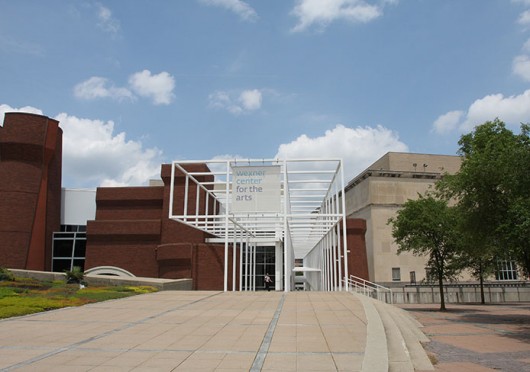
OSU hopes to collaborate with Columbus’ art community to create a university arts district.
Credit: Shelby Lum / Photo editor
Ohio State will take on a greater role in Columbus’ arts community soon.
The district is to be located at 15th Avenue and High Street and include the newly renovated Sullivant Hall, the Wexner Center for the Arts and Mershon Auditorium, said David Manderscheid, dean of the College of Arts and Sciences.
“It was a plan of the previous dean (now-Provost Joseph Steinmetz) and certainly a plan I’m continuing and expanding to provide facilities for our students in the arts and provide opportunities for students in the arts that are second-to-none,” Manderscheid said.
Sullivant Hall closed for renovation in August 2011, according to Lantern archives. It is set to open this month, which is three months past its projected opening in November.
The building will house the Department of Dance, Advanced Computing Center for the Arts and Design, Department of Art Education. The Billy Ireland Cartoon Library and Museum made the move to Sullivant in November.
The renovation of Sullivant is the first step in the creation of the arts district on campus. The next step includes the expansion of the music and theater buildings, Manderscheid said.
The entire plan is budgeted to cost $200 million, which comes from the university, donors and money from the privatization of campus parking, from which $50 million was set aside as an endowment for the arts, Manderscheid said.
The city of Columbus welcomes further collaboration with the university, said Jami Goldstein, vice president of marketing, communications and events for the Greater Columbus Arts Council.
“The Greater Columbus Arts Council and the arts community have always had a strong partnership with the university,” Goldstein said. “The offerings of OSU arts are really just great for the community as a whole and for our cultural tourism.”
The reopening of Sullivant provides the “perfect launch” for collaboration between the city and university, Goldstein said.
“The idea of a more connected downtown has always, I think, been part of everyone’s plans,” Goldstein said. “If we can connect the university and the downtown area, everyone benefits.”
Further recognition of the arts in Columbus will come with the expansion, but the existing arts scene has already garnered national and international attention, Goldstein said.
“We have world-class arts here. There’s no doubt,” Goldstein said, pointing to Gallery Hop and the retail sector of the Short North Arts District. “Some might argue that the Short North is already a world-class arts district … I think that this just takes it to the next level.”
Manderscheid shared Goldstein’s vision of Columbus arts growing.
“We live in a great city for the arts, and we want to capitalize on that for the students’ advantage and for the community’s advantage,” he said.
Some students in the Dance department are excited for Sullivant to reopen.
“We’ve been anticipating it for almost two and a half years now, so it’s definitely well worth the wait,” said Elyse Morckel, a fourth-year in dance.
The added collaboration between OSU and the Columbus arts community has students feeling more confident about their prospects after graduation, Morckel said.
“Being connected and having that networking that our department and the university promotes is something that I feel is a valuable tool going into the real world looking for jobs,” Morckel said.
More information on the next step of the building of a university arts district will be available later in the semester, Manderscheid said.


